THE LEADER
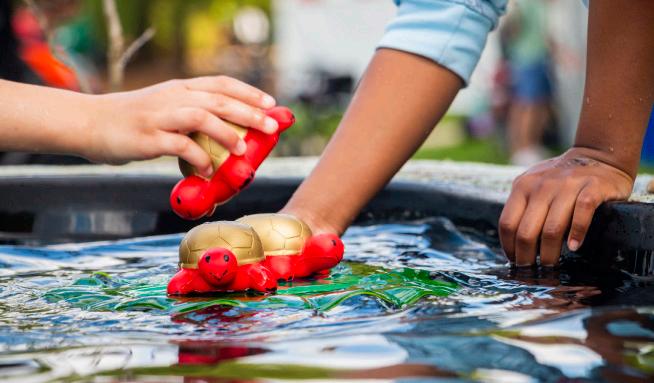
Finding Passions, COPING WITH SETBACKS
Top Lessons from TERRAPINS
Why “Yes” Can Change EVERYTHING


Finding Passions, COPING WITH SETBACKS
Top Lessons from TERRAPINS
Why “Yes” Can Change EVERYTHING
Hey Sigma Circle!
I am honored to serve as your president for the 2025-2026 school year. My name is Ela Jalil and I am a Senior pursuing a dual-degree in Journalism and PPE (Philosophy, Political Science and Economics). I was inducted in Spring 2024, and never fail to be inspired by the amazing leaders we have here on campus. I served as the Public Relations Chair last year, so The Leader and our previous executive board holds a special place in my heart. All of the recent ODK graduates have taught me that the principles of ODK do not pertain to only college, but are values that we carry with us for the rest of our lives. I know every single one of you will be making an impact on our world, and I’m so excited to see it. Our current executive board is brimming with innovative ideas that seek to bring our community closer together, and we look forward to sharing them with you this semester.
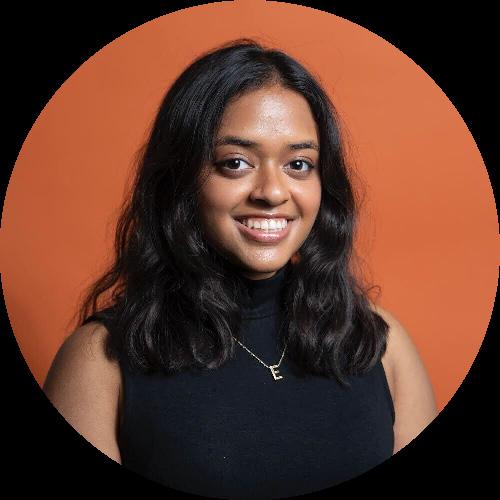
It’s truly a bittersweet feeling that this is my last Fall semester at UMD. But I’ve slapped a “Kiss Me I’m a Senior” button onto my backpack and have set out to fulfill my bucket list items I wrote for myself during freshman year of college. One of them is swimming in the ODK fountain, whose tiles might be looking a little more full by Homecoming. Another is attending our upcoming Fall lecture event, where we are excited to welcome Giancarlo Esposito to our campus. To all my ODKers, enjoy the Fall and keep up with all that you do that makes ODK and our university amazing!
The executive board is excited to welcome new leaders into our Circle, and have been thinking of new ways to ensure that there is more equal representation between the pillars. Our organization is always a bit smaller in the Fall, and the executive board hopes to get to know all current members of ODK.
I also want to congratulate everyone who was selected into the Sigma Circle this year. Your work shapes the way I view leadership, making sure that empathy and communication are at the forefront of the conversation. Our lovely Public Relations Chair, Sophia Vallandingham, has spent hours cultivating story ideas, editing articles, and coordinating with other members of our board to produce The Leader. The board offers advice and introspective pieces on what leadership truly means. We hope you enjoy.
Terps Forever,
Ela Jalil
ODK Sigma Circle President
ODK Executive Board 2025-2026
Ela Jalil
President
Matthew Adjodha Vice President
Hayley Pinkowitz Alumni & Member Engagement Chair
Catherine Furtado Philanthropy & Community Service Chair
Kevin Lam Events & Lectures Chair
Anika Darbari Membership & Induction Chair
Pragya Kumar Recruitment & Community Outreach Chair
Sophia Vallandingham Public Relations Chair
Latrell Cook Digital Communications Chair
Jess Daninhirsch Historian
Dr. James McShay Circle Co-Coordinator
Sarah Williamson Circle Co-Coordinator
Dear ODK Members,
Fall has arrived in College Park, and with it comes a season of new beginnings and renewed traditions. Campus is alive with the rhythm of classes, athletic events, and the many ways Terps connect with one another.


Our Sigma Circle is also in motion. This semester, we’ve seen more than 200 students apply to join ODK, a clear reminder that the desire to lead with integrity and collaboration remains strong among Maryland’s student leaders. Soon, we’ll welcome a new group of inductees who will join us in carrying forward a century-long legacy of leadership.
This fall, we also celebrated leadership in action through the Drury G. Bagwell Lecture Fund, which continues to bring timely voices and perspectives to campus. These moments of shared learning underscore the values that bind our circle together: scholarship, service, and fellowship.
As we look ahead, we’re especially mindful of our place in history: the Sigma Circle will celebrate its 100th anniversary in 2027. With nearly a century of leadership, tradition, and community behind us, each semester brings us closer to honoring that milestone and reflecting on the many members who helped shape ODK at Maryland.
We invite you to stay engaged with us, by reconnecting at events, sharing your news with the circle, or exploring the new MyODK platform to keep your information up to date. Every story and every contribution adds to the strength of our community.
As you read this edition of The Leader, we hope you’ll enjoy stories that highlight both the impact of our members and the enduring traditions that keep ODK’s spirit vibrant at the University of Maryland. May this fall bring you growth, connection, and inspiration.
Warmly,
Dr. James McShay & Sarah Williamson
ODK Sigma Circle Co-Coordinators
P.S. Save the date—Maryland Day returns on Saturday, April 25, 2026. We’d love to see you at the ODK Fountain!

Ela Jalil
My name is Ela Jalil and I am honored to serve as the President of the Sigma Circle. I am a Senior pursuing a dualdegree in Journalism and PPE (Philosophy, Political Science and Economics) and I am from Potomac, Maryland.
I graduated from Honors Global Communities (now Honors Global Challenges and Solutions), which is a twoyear living learning program where I also served on the executive board. I have been a part of The Diamondback since my sophomore year, where I currently serve as Deputy Engagement Editor. This position puts me in charge of the newsletter and all social media once a week. I previously volunteered as a Tour Guide for the Images and the Philip Merrill College of Journalism, and served on the board of the Society of Professional Journalists. I recently joined Alpha Phi Omega, a service fraternity, where I am excited to give back to the community.
Journalism is a major source of my involvement on campus, where I have worked for the Howard Center for Investigative Journalism, the Local News Network, and the Capital News Service. All of these programs are run through Merrill College, and allow me to strengthen my journalistic skills with hands-on experience. I am interning at the Baltimore Sun this semester, where I am excited to report on important stories in the community.
Outside of school, I like to try new places to eat, go on long walks or watch rom-coms and sit-coms.
Favorite Place on Campus: The weeping willow by the Memorial Chapel
Current Favorite Song: “Beaches” by Beabadoobee

Molecular Genetics and I am from Rockville, Maryland.
I serve as Co-President of the Asian American Student Union (AASU) and a Program Coordinator, Team Leader, and Tutor with the College Success Scholars (CSS). I do research as a Maximizing Access to Research (MARC) Scholar and was a Peer Research Mentor for the First–Year Innovation and Research Experience (FIRE) Program. I sit on the School of Public Health’s Dean’s Undergraduate Advisory Council (DUSAC), serve as UMD’s Student Representative for the Universitas 21 (U21) Programme, and participate as a Rawlings Undergraduate Leadership Fellow with the School of Public Policy. I am an alum of the Federal Fellows Program as a Public Health Policy Fellow. I volunteer with the Sports Nutrition Program under the Maryland Athletics Department and Community Health Awareness, Messages and Prevention (CHAMP) Lab at the University of Maryland School of Medicine.
I have worked at the FDA, Johns Hopkins University, and the Mayo Clinic. My professional experiences have expanded knowledge and interest in how people’s social, environmental, and ancestral experiences shape their body and health especially in cases of inflammatory, autoimmune, and allergic diseases.
I am an avid binge watcher of everything nature and sci–fi, love to read science humanities and sociology audiobooks, listen to a wide array of house music, hyperpop, indie rock, and R&B, as well as try new ethnic foods with friends across College Park, Rockville, and D.C.
Favorite Place on Campus: Maryland Dairy
Current Favorite Song: “LA” by Aminé Hayley Pinkowitz
Matthew Adjodha
My name is Matthew Adjodha and I’m so excited to start my second year with the Sigma Circle as Vice President. I am a Senior pursuing a dual degree in Public Health Science and Cell Biology and

Hi! My name is Hayley Pinkowitz and I am excited to be serving as the Alumni and Member Engagement Chair of the Sigma Circle this year. I am a Senior majoring in Economics with a minor in Statistics, and I am from Woodbridge, New Jersey.
On campus, I serve as President of the Student Alumni Leadership Council (SALC), which is the student branch of the Alumni Association. I previously served as the Vice President of Campus Programming for SALC. I also serve as a Family Weekend Ambassador, helping to check families in and support some of the events during the weekend. I have been a Do Good Ambassador, where I
led workshops for first year students on how they can get involved in social impact during their time at UMD and beyond. Additionally, I was a College of Behavioral and Social Sciences Ambassador and served as a member of the College of Computer, Mathematical, and Natural Sciences’ Dean’s Student Advisory Council.
This past summer, I interned as Product Manager Summer Associate at Navy Federal Credit Union and I’m excited to return full-time after my graduation this December. Outside of school, I enjoy watching reality TV, going to as many Terp sporting events as I can, and listening to lots of different types of music.
Current Favorite Song: “Waffle House” by Jonas Brothers

Catherine Furtado
Hello, my name is Catherine Furtado, and I am proud to serve as the Philanthropy and Community Service Chair for the Sigma Circle this year! I am a Senior Kinesiology major and Human Development minor from Waldorf, Maryland. Philanthropy and community service are both things I have a lot of enthusiasm for, and are reflected throughout my campus involvement. I have spent my Saturday mornings at Stamp, tutoring for the Latino Student Fund, and my Sunday mornings at the School of Public Health as a volunteer coach for the Kids Enjoy Exercise Now (KEEN) program. I have transferred this passion for community service into leadership, serving as the Community Service Chair for the Filipino Cultural Association and for Delta Epsilon Mu (a co-ed, pre-health fraternity!) I also love working with kids, and I currently work at UMD’s Center for Young Children as a Teacher’s Aide.
All of these experiences have helped me solidify my passion and plans to attend occupational therapy school to obtain my Doctorate of Occupational Therapy and ultimately become a pediatric occupational therapist! Outside of school and my extracurriculars, you will likely catch me with my friends eating some sushi and drinking some boba at The Spot or catching some sun and listening to music on McKeldin Mall!
Favorite Place on Campus: McKeldin Mall
Current Favorite Song: “Oh Lala” by Justine Skye and KAYTRANADA

Kevin Lam
Hi! My name is Kevin Lam, and I am excited to serve as the Lectures & Events Chair! I am a Senior pursuing a degree in Nutrition and Food Science and a minor in General Business.
During my freshman year I worked as a Research Assistant in Dr. Ryan Blaustein’s Lab and performed research related to anti-microbial resistance in urban agriculture. I am a Food Science Peer Mentor for the Academic Programs office and as a Student Ambassador in the College of Agriculture and Natural Resources.
I currently serve as the Vice President of Alumni Relations for the Food Science Club, in which I previously had served as the President. We seek to foster curiosity for the science behind food. Our organization also hosts a multitude of professional development events to help our students develop a network for their career aspirations, and we also participate in Maryland Day. I am also a Student Ambassador for the Department of Nutrition and Food Science and I volunteer with the CARing Project with the Lutheran Campus Ministry. I also have recently joined the Maryland Mentor Corps as a Tutor for students in the Latino Student Fund.
This past summer, I worked as a Medical Assistant at a pain management clinic. In the future, I intend on applying to medical school and pursue my goal of being a physician.
Outside of school you can find me cooking in my apartment, hosting dinner parties, and watching movies. You will also see me trying as many new restaurants as I can find and fit into my schedule!
Favorite Place on Campus: McKeldin Mall and Eppley Recreation Center
Current Favorite Song: “Through Me” by Beach House

Anika Darbari
Hi everyone! My name is Anika Darbari, and I’m excited to be the Membership and Induction Chair of the Sigma Circle this year. I am a Senior Neuroscience major and Spanish minor on the pre-medical track,
from Silver Spring, Maryland. On campus, I am a Life Sciences Scholars alum, and have been lucky to find some of my closest friends in the program. I have served as President for STRIVE, a sickle cell mentoring program, since my sophomore year. I’ve also worked as a Teaching Assistant for three semesters for Neuroscience and Biology courses. I am also Vice President of Outreach for BridgeUMD, a political discourse club addressing polarization. Currently, I am conducting research at Children’s National Hospital regarding Sickle Cell Disease and genetic factors.
In the future, I plan to attend medical school and work as a pediatrician. I’m interested in particularly serving kids with chronic conditions and patients facing language barriers in healthcare settings. Growing up in a bilingual household, I’ve seen the impact of language on connection and how it can be used as a tool for patient comfort.
Outside of class, I love engaging in all things music, from playing guitar, collecting vinyls, making Spotify playlists, and attending concerts. You can find me strolling around campus, painting with friends, and trying out restaurants around campus.
Favorite Place on Campus: Washington Quad and the School of Public Health
Current Favorite Song: “Spring into Summer” by Lizzy McAlpine

Pragya Kumar
My name is Pragya Kumar, and I have the honor of serving as the Recruitment and Community Outreach Chair! I am a Senior on the pre-medical track pursuing a double degree in Neuroscience and Social Data Science (in the Psychology concentration).
Ever since I was a freshman, I’ve been heavily involved on campus. I am in the Integrated Life Sciences honors program, where I have taken a myriad of classes in biology that have helped me realize my passion for academics and medicine specifically. I have worked as a Teaching Assistant for introductory and intermediate neuroscience classes, and an upcoming course regarding the intersection between artificial intelligence and neuroscience!
I have also interned in an EEG lab for about 2 years
now, helping advance research on racial discrimination and how it can impact behavior. I have volunteered in numerous non-profit medical clinics for patient triage, collecting information like blood pressure and temperature, while working closely with doctors. Last summer, I had the opportunity to work in an Ophthalmology Clinical Research lab, where I used machine learning models to discover demographic predictors of severe visual impairment. This past summer, I interned with UMD’s Do Good Institute at the Down Syndrome Network of Montgomery County!
In my free time, I love to watch anime/TV shows (shoutout to The Summer I Turned Pretty!), hang out with my friends, and lift whenever possible. I hope to one day work in a pediatric field, but I wish to enjoy my journey as much as I can!
Current Favorite Song: “Track 10” by Charlie xcx

Sophia Vallandingham
My name is Sophia Vallandingham, and I am excited to serve as the Public Relations Chair for ODK! I am a Senior from Westminster, Maryland and am pursuing a dual degree in Public Health Practice and Psychology.
I am in my second year as a Resident Assistant in Anne Arundel Hall, and am an alumni of the Honors Humanities program in the Honors College. I just completed my Keystone project last semester! I am a member of Eta Sigma Gamma, National Health Education Honors Society and am a Co-Founder and current Programming Chair of Student Organ Donation Advocates at UMD. We are a campus chapter of the national organization Donate Life! I serve as an Ambassador for the Public Health Practice major and am an undergraduate TA for HLTH 306 in the School of Public Health. I also work at the Center for Young Children as a Student Aide.
After graduation, I intend to pursue my Master of Public Health and Master of Social Work with the hopes of working in public health policy and education in the future. My main area of interest is substance use, and I hope to increase access to risk-informed, holistic care and treatment in underserved communities with the goal of decreasing rates of generational substance use.
Outside of school, you can find me in a cycle class at RecWell, walking around Lake Artemesia, eating at the
Panera in Stamp, listening to true crime podcasts, or watching Terps or DC sports!
Favorite Place On Campus: The Coffee Bar in Stamp
Current Favorite Song: “I Told You Things” by Gracie Abrams

Latrell Cook
My name is Latrell Cook (he/him), and I am happily serving as the Digital Communications Chair. I am a Junior pursuing a dual degree in Biological Sciences (Physiology and Neurobiology) and Psychology with a minor in Humanities, Health, and Medicine from Pikesville, Maryland!
Outside of ODK, I am in the Biology Honors Program and conduct research in the Araneda Lab, primarily investigating how social isolation impacts the process of neurogenesis in the olfactory bulb. I am an alum of the Civic Engagement for Social Good program of College Park Scholars and recently earned my citation this past spring! I am a Resident Assistant for Johnson-Whittle Hall, a CMNS Peer Mentor, a student in the Public Health Policy concentration of the UMD Fellows Program, a MARC Scholar, and Vice President of Teal Titans, a student chapter of the National Ovarian Cancer Coalition. Lastly, I am also on the Executive Team for College Success Scholars and a member of Psi Chi.
I’ve recently grown passionate about the field of public health, so now I intend to pursue a dual PhD/MPH program to investigate how biological, psychological, and sociological factors contribute to health outcomes and behaviors. I’m very passionate about advocating for health equity and want to be a leader in bridging the gap between scientific research and policy implementations.
Outside of school, I love photography, concerts, visiting national parks, watching the Baltimore Ravens (huge Kyle Hamilton fan), and reading novels!
Favorite Place on Campus: Washington Quad or McKeldin Mall
Current Favorite Song: “M.I.A.” by Ravyn Lenae
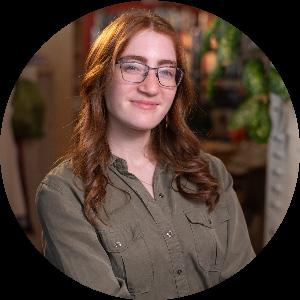
Jess Daninhirsch
My name is Jess Daninhirsch, and I have the pleasure of serving as the Historian for ODK. I have the privilege of capturing life in ODK on camera this year! I am a Senior Journalism major and History minor from Pittsburgh, Pennsylvania.
I’ve had the joy of being involved in many clubs and organizations during my years at UMD. While I’ve dabbled in so many different clubs, the most impactful things I’ve been involved in are Kol Sasson Jewish A Cappella, Avirah Israeli Dance Company, working as a Capitol Hill Reporter for Capital News Service, working as a Photographer for UMD’s Office of Marketing & Communications, serving on the Society of Professional Journalists chapter board, and being an active member of the Jewish community on campus, (and now, ODK!). For each of these clubs, I have held numerous roles, often focusing on communications and using my journalism skills to capture our activities.
In the future, I hope to live abroad and travel the world with a camera in my hand. I want to be a traveling photojournalist and filmmaker, and I want to find ways to work in journalism in any way that I can. As long as I have a camera, I’ll be happy.
Favorite Place on Campus: Washington Quad or the Clarice (I spend a lot of time there between Kol Sasson and Avirah!).
Current Favorite Song: “Don’t Let Go” by The Ghost Club (a Pittsburgh band!) will always be one of my favorite songs.

By Matthew Adjodha ‘26
White limestone steps, bustling officials, billowing flags; to many, the nation’s capitol is a whirl of pompous goings–on. Growing up a native Marylander, it was more. It was the intellectual leadership reflected in children making Smithsonian museum trips a pastime (the free entry a delight to my economical New Yorker parents). The community leadership reflected in the countless immigrant mom–and–pops feeding residents and tourists alike. The artistic leadership reflected in the quilts of Graeco–Roman, colonial, brutalist, and modern architecture adorning the city. Today, a very different leadership has taken hold. Current executive policies have quashed D.C.’s intellectual, community, and artistic leadership; yet that exact leadership is what the city was founded upon.
Indigenous Nacotchtank leaders on the Anacostia River and Nameroughquena leaders on the Potomac River were (and still are) the first people to steward the land that would become the District of Columbia before European colonization in 1608 and the Constitution’s claim to the land in 1790. The city’s design emerged from architect Pierre L’Enfant’s nostalgia for his walkable Parisian homeland; intellectual leaders Andrew Ellicott and Benjamin Banneker (a Black mathematician) shaped this vision into the beloved streets of today. By the 1800s, one in every four Washingtonians were Black; they constructed the Capitol Building, the White House, and many more monuments with their architectural prowess even under the yolks of slavery. As thanks for building an entire city, Black Washingtonians were subjected to Black Codes starting in 1808. Against these measures, Black leader William Costin challenged laws forcing people to present papers just to walk around after 10:00 PM. Yet after the blaze of some British invasion we never learn about in 1812, the phoenix D.C. rose again.
Supporting Black liberation, Marylander Harriet Tubman led countless people to emancipation through the city while Harriet Beecher Stowe published her anti–slavery tale Uncle Tom’s Cabin under abolitionist Gamaliel Bailey’s editorship of D.C.’s The National Era. Taking in post–Civil War refugees, community leaders Elizabeth Keckley founded the Contraband Relief Association while Sojourner Truth organized with the Freedmen’s Village. Uplifting community institutions, Frederick Douglass’s sons Lewis and Charles joined D.C.’s city council and integrated baseball leagues, respectively, while U Street became a “Black Broadway” for such artistic leaders as Duke Ellington, Langston Hughes, and Zora Neale Hurston. Other famous neighborhoods (or “metro stops” in College Studentese) became storied communities. Gallery Place housed D.C.’s first Chinatown and Friendship Arch which
we actually share with Beijing, China. Penn Quarter was home to D.C.’s first synagogue. The Wharf was first a bustling fish market attracting Black entrepreneurs before gentrification. Union Station was built around Gallaudet University, the world’s first Deaf university. A second fire in 2012 reshaped the city anew.
Today, intellectual, community, and artistic leaders continue the grassroots activism which literally built and shaped the city we know and love. Stand Up For Science and Federal Workers Against DOGE are rallying support for science, civil service, and intellectualism. The Sunrise Movement, Free D.C. Project, Harriet’s Wildest Dreams, CASA, Hola Cultura, and Food Not Bombs have empowered community leadership against unlawful searches and kidnappings especially in DC’s majority Black and Salvadoran communities. Representative Eleanor Holmes Norton and Senator Ankit Jain are fighting for Home Rule, Washingtonians’ right to determine what is best for their city. HumanitiesD.C., Notify D.C., and D.C. Oral History Collaborative (yes, even Overheard D.C.) are archiving events that are otherwise censored.
To date, ODKers have held six presidencies, five Supreme Court Justice seats, eight senatorial seats, and thirteen representative seats in the nation’s capitol. But sometimes leadership does not look like suits and ties; it looks like half smokes and shrimp boats, injera and pupusas, Mumbo (Mambo?) sauce and dim sum, and the hardcore sounds of Fugazi and Bad Brains. Perhaps this leadership, a people’s leadership, is the one this city now needs most.
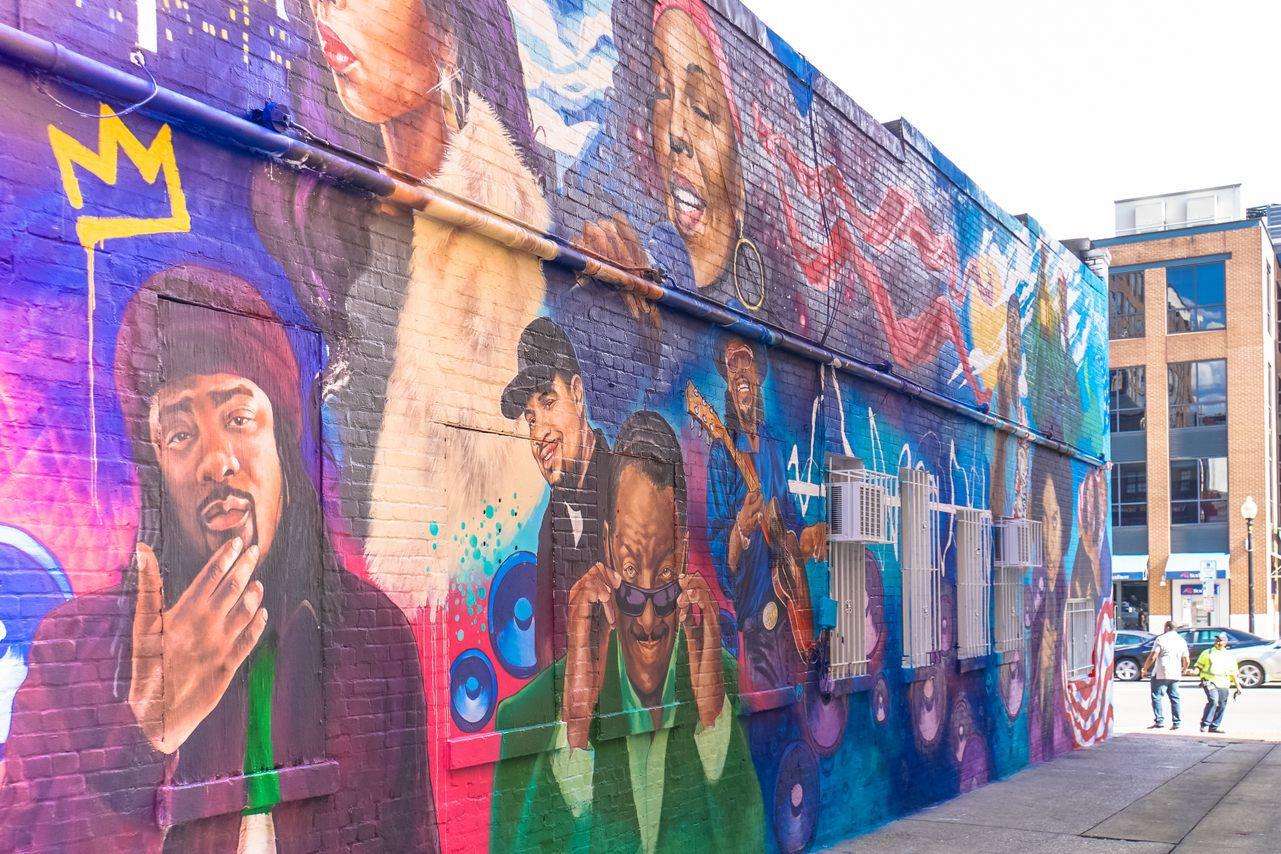
By Anika Darbari ‘26
At the University of Maryland, most of us are familiar with our mascot, Testudo, a diamondback terrapin. However, most of us likely do not know the actual life of a terrapin, like what they eat, their behavior, or their habitats. While looking into our beloved mascot, I realized that, similar to many things in nature, there are many lessons that we can take away from terrapins.
No matter what stage one is in during college, it’s easy to get caught up in comparisons with others. Whether it’s grades, extracurriculars, or internships, it can be easy to feel behind. I know plenty of people getting caught in LinkedIn doom scrolls, and I have personally felt that dread of uncertainty while someone lays out their perfected career path.
Terrapins are masters of going at their own pace, and as college students, we can learn a lot from them. During the semester, it’s important to check in on your mental and physical health to prevent burnout. Take your time to figure out what on campus brings you joy and will recharge you.
From my orientation group, I remember that on average, a college student will change their major three times. This is a great time to figure out your personal interests and discover passions that will fuel your future. There is no singular correct path to success, so do not become driven by comparison, but rather by your own intuition and interests.
One word that kept popping up about terrapin personalities was curiosity. Everyone enters college at a different stage, with some people having a 20-year plan, and some still discovering their personal passion. No matter what stage you are at, embrace curiosity. Even if it’s not clear how current decisions are forming into the puzzle that is our future, it’s important to trust your gut. My favorite moments from college have been in the smaller and unplanned adventures with my friends.


Speaking from personal experience, the club that you join on a whim freshman year might end up being one of your top three experiences in college. As a pre-health student, I thought I had no business joining BridgeUMD, a political discourse club. I’ve now been involved in the executive board for the past three years, and even travelled to discuss with students across the nation. I’ve grown so much as a leader and person, and can’t imagine my college experience without Bridge. You never know where that opportunity will end up leading you, so stay curious.
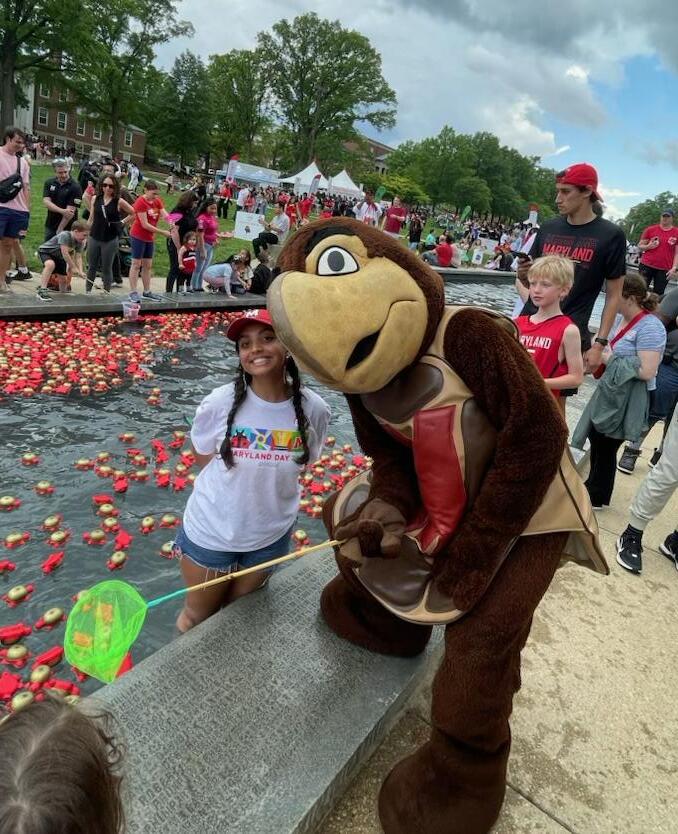
In my opinion, the most notable physical feature of Testudo is the large, patterned shell. While the shell serves as a protective cover, it’s also a symbol of the species’ resiliency. While college places us in a position of independence, with numerous opportunities, students also face a host of new challenges. From balancing classes, living away from home, and building new friendships, it’s easy to feel overwhelmed.
However, just as a shell protects terrapins, there are several resources available on campus to guide students through this challenging time. Some great resources include the help center, a student-run, counseling and crisis intervention hotline, the wellness series, hosted by the counseling center on campus, and lastly, other students and staff in the campus community. Be sure to take advantage of these resources, and remember that there is always help available.
The next time you see Testudo as a statue, around the ODK fountain, or at a game, remember these life lessons from terrapins.
By Catherine Furtado ‘26
With a student population of over 40,000, a new school year brings together students from diverse backgrounds and interests back to the UMD campus. The first week of classes unites us as students through shared experiences: picking out a special “first day of classes” outfit, finding classrooms in an unfamiliar building, and everyone’s favorite–icebreakers.
“Give us a fun fact about yourself.”
“What was your favorite thing you have done this summer?”
“Tell us about your hobbies.”
The last question is a simple one, but something that I often struggle to answer. Hobbies? I have lots of hobbies. I used to ice skate, I used to knit, I used to… Hobbies were something I often engaged in when I was younger, but as I grew older, I noticed that my desire to engage in meaningful hobbies had slowly dwindled. I believe this is for two reasons: toxic productivity and an unhealthy attachment to my phone and social media.
At UMD, we are all enrolled in academically rigorous classes and engaged in many extracurricular activities that benefit our future careers and/or graduate school endeavours. Many of us find ourselves stuck in an endless cycle of working long hours on assignments, pulling allnighters for exams, and club meetings, unfortunately, at the expense of our social life, health, and hobbies. This idea of toxic productivity is the idea of overprioritizing our to-do list and feeling guilty just for taking breaks and prioritizing time for ourselves and others. And, when that break is finally taken, we often turn to our phones and social media to fill that time and give ourselves a quick boost of our “happy hormones.”

Hormones like endorphins, dopamine, and oxytocin are released when we engage in entertaining content and positive social interactions (i.e., likes, comments, etc.). Because we often get this fulfillment from online sources, we have become more reliant on these forms and less likely to seek out hobbies to experience “happy hormones” in a more organic

way. So, as UMD students, how can we discover, maybe even rediscover, hobbies? Here are just a few options to get you started!
Look into Everything that RecWell offers
We all know places like Eppley Recreation Center and Ritchie Coliseum are great for getting a good workout in, but group fitness classes are a great way to stay active, meet new people, and help keep you accountable. From spin class, pilates, to Zumba, RecWell offers many classes for varying fitness levels and interests, free for all students! If group classes are not your speed, an indoor bouldering wall opened recently at Eppley. It’s a great way to challenge yourself and get a good workout in. Warning! Be ready to be sore afterwards if it’s your first time (speaking from personal experience).
Visit Stamp’s Studio A
Take classes and workshops to improve your fine arts skills! Studio A offers beginner to intermediate level classes in painting, drawing, photography, and pottery (there’s even a casserole dish making workshop!) Want to get moving? Classes like ballroom dancing and yoga are also offered. Note: these classes are offered at various rates/prices.
Stamp’s Leadership and Community Service-Learning (LCSL) office offers many ways that you can get involved with community service on campus. Whether it’s through programs like Terps for Change, Maryland Mentor Corps, Maryland LEAD, and more, there are many ways that you can give back to the community. In fact, there is even a free virtual resource called Services 24/7, where you can connect with many nonprofit organizations and find a service opportunity that resonates most with you!
Join Hobby-Based Student Organizations
Love video games and playing music? Consider auditioning for the UMD’s very own Gamer Symphony Orchestra. Want to try learning some new food recipes? Look into the Culinary Club! With a campus that boasts many students with varying interests, UMD has tons of unique organizations that are open to new members with different skill levels. Visit the TerpLink and see if you can find an organization that interests you!
By Kevin Lam ‘26
Maddie and Claire
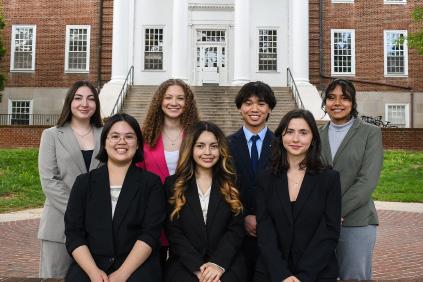
Maddie Caiazzo and Claire Ravel are two of the newest executive board members in the Food Science Club (FSC) this Fall. The first time I met Claire, she was a freshman who recently transitioned from pursuing an English major to studying Nutrition and Food Science with a concentration in Dietetics. In the Spring of 2025, Claire was an engaged attendee participating in the Food Science’s Club’s culinary workshops such as ‘Ferment Your Own Hot Sauce’ and our Chopped Inspired Cooking Contest. The second time we interacted with Claire was when she attended the College of Agriculture and Natural Resource’s Annual Discovery and Innovation Night to present her experience at the Agriculture Future of America (AFA) Leader’s Conference with her peers, including Maddie. At this event, our executive board for FSC was also presenting a poster advertising our organization to students, faculty, and other professionals attending the event. During this time our executive board and organization was still in a formative stage and were looking for new talent to cover our bases and truly accomplish our mission of fostering curiosity in the world of Food Science. When I ran into Claire I jokingly asked: “Would you and/or your friends like to join the Food Science Club Board?” To which Maddie and Claire unexpectedly and promptly responded “YES!”
Growing the executive board has been very exciting for the FSC, and it is important to understand how the organization has developed from the state it was two years ago. FSC was founded in 2017 with the intent of fostering professional development and growth within a network of the Nutrition and Food Science Department’s students. After COVID-19, FSC engagement had slowly started to diminish, and unfortunately due to a failure of transitioning into a proper executive board in 2023, the club dissolved and became a frozen student organization.
During the Spring of 2024 my advisor, Sara Kao, proposed that I bring back the FSC and assume the role of President. Not having had any prior executive board experience at the University of Maryland in the past, let alone unfreezing
and reviving a club, was daunting. It was after some careful deliberation in which I tentatively said “yes.” From there, with a little trial and error, the FSC has had a slow and steady triumphant return.
In its second year of reinstatement, the FSC is picking up steam. At our first general body meeting this year, ‘Cookie Baking’, we had a 50 person turn out, which was much more than we had expected before the First Look Fair. In addition to planning the aforementioned baking event, Claire, as our Vice President of Programming, has prepared an extensive list of activities such as a ‘Mochi-Making Workshop’, and a ‘Kombucha Fermenting Workshop’. As the year progresses we also plan to continue our legacy professional development events such as ‘Resume Critique Night’ and ‘Research Night’. As our Vice President of Finance, Maddie has helped us orchestrate a successful fundraising sale of the cookies we recently baked and is coordinating an event to feed foster youth in Shifting Gears Inc. As I have stepped down from my previous role, our current President, Kiara Andino, steers the club headfast and passionately, and has worked tirelessly to ensure our organization’s mission stays focused on developing curiosities in and opportunities for Food Science for students from all academic backgrounds. I am very excited with the direction and growth of the FSC, and l truly believe that our current success boils down to the accumulation of small yesses in times where leaders were needed.
I recall how my first few times saying “yes” have led me to my most meaningful experiences that have defined my career at UMD. Agreeing to talk to the new professor in the office next to my academic advisor landed me an opportunity to perform freshman year research on AntiMicrobial Resistance in local Urban Agriculture. Applying to become a Peer Mentor for the College of Agriculture and Natural Resources at the lively suggestion of another peer, led to a wonderful discovery of a network of supportive peers and staff and developed my confidence to also become a Student Ambassador. Listening to my friend describe Omicron Delta Kappa and agreeing to her whimsical request to apply with her has now led me to my current role as the Events and Lectures Chair on the executive board. There are a multitude of situations where I have been offered or introduced to an opportunity in which I had the simple choice of responding “yes” or “no.” My experience with leadership has been influenced by choosing the first timid “yes” and it has led to opportunities and offers that have seemed tremendously daunting in the past. Say “yes!” to the classmate asking you to study or get lunch. Say “yes!” to joining that club at the First or Second Look Fair. Say “yes!” to the board position for the new club your friend is starting. We become better leaders when we brave the unknowns behind a simple affirmative “yes,” and as cliche as it sounds, you never know where that “yes” may take you.
By Pragya Kumar ‘26
I know you’ve felt it. The sense of impending doom as you watch your assignments on Canvas. The dread that fills you as you try to keep a track of your neverending exams. The stress that accumulates when you also have to worry about job interviews, internship applications, and extracurricular activities.
Burnout is real. Students are experiencing alarming rates of burnout, much higher than ever seen before, with some studies reporting how around at least 60% of all students are experiencing symptoms (Liu et al., 2023). This phenomenon is characterized by “chronic emotional exhaustion, depersonalization, and decreased sense of personal accomplishment that arises from prolonged exposure to occupational stress” (Cădariu & Rad, 2025).

One major issue with burnout is its link to rising anxiety and depression among younger generations. So what is the solution? How can student leaders especially combat burnout and other related mental health issues?
Over the past couple of years, research has begun to illuminate the answer to these questions. Science-based interventions have been studied for their effectiveness, and emotional regulation techniques have appeared at the forefront. Most studies emphasize the importance of being proactive rather than reactive; ensuring that you are taking steps while you are working to prioritize your mental health before it even begins to approach burnout. Here are some of the most effective strategies you can use, no matter what your workload looks like.
Cognitive reappraisal involves changing the way we think
about a stressful situation, often by reinterpreting it in a less negative light. This emotional regulation strategy has been shown to be effective in reducing burnout. A study led by Martín-Brufau (2020) highlights that individuals who used cognitive reappraisal report lower emotional exhaustion and depersonalization, which are key symptoms of burnout. The ability to reinterpret challenges in a more positive or manageable way helps reduce the emotional toll of stressful experiences. Research also suggests that cognitive reappraisal helps buffer against emotional overload, allowing individuals to feel more in control and less overwhelmed by their workload.
Mindfulness practices, such as meditation and focused breathing, promote present-moment awareness and have been shown to significantly reduce burnout symptoms. A systematic review by Wang (2023) found that mindfulnessbased interventions led to lower levels of emotional exhaustion, anxiety, and depression, all of which contribute to burnout in professionals. Practicing mindfulness helps individuals focus on the present rather than ruminate on past or future stressors, which can prevent the cycle of stress from building up. This form of emotional regulation also improves emotional awareness, enabling individuals to better manage their reactions to stress. Mindfulness is not only about relaxation; it also teaches individuals to respond thoughtfully rather than react impulsively, which is crucial for preventing burnout.
Expressive writing, where individuals write about their thoughts and emotions, is another effective strategy for emotional regulation. Studies suggest that writing about stressful experiences allows individuals to process their emotions in a healthy way. Adam (2023) demonstrates that expressive writing can significantly reduce stress and burnout, especially when combined with other emotional regulation strategies. Writing about difficult experiences allows for emotional processing and can clarify thoughts, ultimately leading to reduced emotional distress. Additionally, expressive writing has been linked to improvements in overall well-being, as it helps individuals express feelings they may otherwise suppress, vital for long-term emotional health.
Self-care is an essential strategy for managing stress and preventing burnout. Engaging in regular physical, mental, and emotional self-care activities helps individuals maintain balance in their lives. Self-care includes activities such as exercise, healthy eating, adequate sleep, and taking time to relax and recharge. A study led by Chacón-Cuberos (2019) found that individuals who engaged in self-care activities were more likely to report lower levels of burnout, emotional exhaustion, and anxiety. Self-care also enables individuals to set boundaries, ensuring they do not overextend themselves and burn out. This proactive approach to emotional regulation encourages individuals to take control of their well-being, recognizing the importance of rest and
rejuvenation in maintaining long-term productivity and health. The best way to do this is to make sure you are intentionally carving out time to workout regularly, do your favorite hobbies, read your favorite books, or anything else that makes you feel at peace! We are capable of taking control over our emotional well-being.
Conclusion
Emotional regulation is your first line of defense against burnout. Research indicates that individuals with effective emotional regulation skills are better equipped to manage stress and prevent burnout. For instance, a study by Iuga (2023) found that students with higher emotional control and awareness reported lower levels of burnout symptoms, such as exhaustion, cynicism, and inadequacy. Conversely, maladaptive emotional regulation strategies, like expressive suppression, can exacerbate burnout. A study by ChacónCuberos (2019) emphasizes that students who frequently suppressed their emotions exhibited higher levels of burnout symptoms.
Whether it’s by practicing these emotional regulation techniques or reaching out to trained professionals when we feel too overwhelmed, there are resources available to support us. If you ever find yourself struggling, remember that the University of Maryland’s Counseling Center is here to help. They offer a variety of services, including individual counseling, workshops, and stress management resources, all aimed at promoting mental health and well-being. Don’t hesitate to seek support; your mental health matters!
References
Adam, D., Berschick, J., Schiele, J. K., Bogdanski, M., Schröter, M., Steinmetz, M., Koch, A. K., Sehouli, J., Reschke, S., Stritter, W., Kessler, C. S., & Seifert, G. (2023). Interventions to reduce stress and prevent burnout in healthcare professionals supported by digital applications: a scoping review. Frontiers in public health, 11, 1231266. https://doi.org/10.3389/ fpubh.2023.1231266
Chacón-Cuberos, R., Martínez-Martínez, A., García-\ Garnica, M., Pistón-Rodríguez, M. D., & ExpósitoLópez, J. (2019). The Relationship between Emotional Regulation and School Burnout: Structural Equation Model According to Dedication to Tutoring. International journal of environmental research and public health, 16(23), 4703. https://doi.org/10.3390/ijerph16234703
Cădariu, I. E., & Rad, D. Emotional regulation and burnout prevention: psychological contributions to sustainable social work practice.
Iuga, I. A., David, O. A., & Danet, M. (2023). Student Burnout in Children and Adolescents: The Role of Attachment and Emotion Regulation. Children (Basel, Switzerland), 10(9), 1443. https://doi.org/10.3390/ children10091443
Liu, Z., Xie, Y., Sun, Z., Liu, D., Yin, H., & Shi, L. (2023).
Factors associated with academic burnout and its prevalence among university students: a crosssectional study. BMC medical education, 23(1), 317. https://doi.org/10.1186/s12909-023-04316-y
Martín-Brufau, Ramón et al. “Emotion Regulation Strategies, Workload Conditions, and Burnout in Healthcare Residents.” International journal of environmental research and public health vol. 17,21 7816. 26 Oct. 2020, doi:10.3390/ijerph17217816
Wang, Q., Wang, F., Zhang, S., Liu, C., Feng, Y., & Chen, J. (2023). Effects of a mindfulness-based interventions on stress, burnout in nurses: a systematic review and meta-analysis. Frontiers in psychiatry, 14, 1218340. https://doi.org/10.3389/fpsyt.2023.1218340
By Jess Daninhirsch ‘26
I have known what I’ve wanted to do with my life since 10th grade. And let’s face it, that is fortunate. If I hadn’t set on my path that early, I may not currently have my dream internship, and I may not have received the other wonderful opportunities I’ve had so far in my college career.
I’m not going to skirt around it: knowing what you want to do or what career you want to have going into college gives you a huge leg up in whatever field you’re in. But that doesn’t mean you cannot get to where you want to be if you did not decide what you wanted to do with your life in 10th grade like I did (although maybe you stuck with your “astronaut” or “ballerina” dreams you had as a kid – good for you if so!).
College is arguably the best time to figure out what you want to do with your life, but it is okay if you still do not know by the time you graduate. College is the time for you to explore different fields and learn about things that interest you. How you move through your college career can set you up for success no matter what field you may want to go into.
Here’s what to do if you do not know what your path is:
• Make a word cloud of your interests. Draw lines to connect related things to each other.
• Think about hobbies you enjoyed growing up. Find classes and join clubs that correlate to or even expand on those hobbies.
• Take classes that’ll help with general life skills, like economics or family sciences.
• Reach out to career advisors; they can provide a lot of great insight on what others have done and ways to succeed.
• Attend career fairs and club fairs. These are great ways to learn about what’s out there.
• Interview other students or professionals and hear about their experiences in different fields.
• Find a part-time job in something you’re interested in – it could open other doors you may not have known existed.
• Read books on your topics of interest.
• Take a break! Take some time to travel, get out into the world, explore things at your own pace. You can learn a lot about yourself when you travel.
• Listen to your gut. This can apply to so many situations, including career changes. If there is something you really want to do (or don’t want to do), follow your instinct.
• Find value in every class you take, even if it’s not directly related to your career goal.
Many people go through career changes all the time. Take
it from Professor Joshua Davidsburg, who teaches at UMD’s Merrill College of Journalism.
“I have had five careers. Not jobs, careers,” Davidsburg said. He did journalism throughout college, but began working in marketing after graduating. It wasn’t for him, so he went back to journalism and then transitioned to public relations. Later he began teaching, and lastly he became a documentary filmmaker.
“You should take as much as you can from your job, even if you don’t love it…and use that to move on to the next gig,” Davidsburg said. “Just be a sponge and soak it all up, and just know that the job or career you’re in doesn’t have to be the end-career that you die doing.”
Or take it from my mother, who majored in psychology in undergrad and went to law school. She hasn’t practiced law in over two decades – she’s a journalist and a writer now! My mom and I are both journalists, but we did not follow the same path to get here. Your path is yours alone.
Your timeline is also not the same as everyone else’s. Don’t compare yourself to where your peers are; your path is yours alone. You may end up working in the same job as someone who didn’t take all the same classes you did. We can all arrive at the same points and different points by taking different paths.
Remember, life is not all about work! I knew what I wanted to be when I was still in high school, but it’s not that I dreamt of doing the work. I dreamt of being the thing. Of being a journalist. I do the work because I love it. I found a way to make my hobby my job.
It may take you years to get to where you want to be, and as much as you plan, you can never fully guess the timeline. Opportunities will come when they come. It’s your job to seize the opportunities. But just remember, you are exactly where you need to be.

By Latrell Cook ‘27

When our bodies experience a cut or wound, we often tend to focus solely on the pain of the situation. Not to say that we shouldn’t, because pain is a biological response to tissue damage. However, the soreness tends to overshadow the tremendous cascade of physiological changes that follow after experiencing the injury. Free nerve endings in the skin, known as nociceptors, release pain signals to the central nervous system; our blood vessels, in a process known as vasoconstriction, narrow to prevent further bleeding; immune cells rush to the damaged area to remove cell debris and bacteria; and biochemical processes lead to the almost magical regeneration of skin cells. After some time, we go about our lives and forget the cut even happened. Beyond the biological scale, the healing process can be applied to most instances when we experience shortcomings. Not being accepted for an internship position, being rejected from a highly competitive club, organization, or job position, or being snubbed for a position that we may think we deserved. We all have failed in some way and may have taken the situation too personally. We may have been hurt by the situation; however, we healed, and we toughened (like our tissues). But, how could we ensure that we focus beyond the hurting?
Leaders, on a large scale, feel constant pressure to succeed. Once our reputation is based on achievement, it can become difficult to handle situations when we face setbacks. We may be overly critical of ourselves, downplay our abilities, and rethink our competencies. However, it’s essential to remember, as leaders and more importantly, as humans, that blemishes and shortcomings are fundamental in the growth process. Additionally, as young adults surrounded by mass media that perpetuates performativity and flawlessness, we need to remember that our stories are still in the exposition and introduction phase. The legacies of leaders are mostly drawn through persistence, not perfection.
When I was a senior in high school, I was so sure that I would be attending an Ivy League institution. You couldn’t tell me otherwise. In January, I had already begun
imagining my College Decision Day Post on Instagram, showcasing all the schools I had been accepted into, and formally announcing that I would be attending the University of Pennsylvania or Duke University (Ivy Plus) for my undergraduate career. It was the only realistic scenario I envisioned. I was an incredible student after the COVID-19 pandemic; I was well-immersed in extracurricular activities, took many AP courses, and nailed my college essays and interviews. However, over the course of the next few months, I was humbled repeatedly by deferrals, rejection letters, and even more rejection letters. Out of the eleven schools I applied to, I was only accepted to four, waitlisted by two, and rejected by the rest, including Duke and UPenn. I eventually committed to the University of Maryland, but the feeling of rejection outshone the excitement of officially becoming a Terrapin. Two years later, I can only laugh at the fact that my past self failed to realize the incredible situation I was about to enter as an incoming student at the University of Maryland. I look back at my initial feelings of disappointment and realize that the “setback” of college rejections set up a prime social, academic, and professional opportunity for me as an undergraduate.
After experiencing a setback, it’s pivotal to take these steps:
Give yourself space to feel.
Emotions like sadness, disappointment, and frustration are human responses to shortcomings. Give yourself a platform to release your raw reactions and thoughts. Cry, listen to music, vent to a friend, partner, counselor, or loved one about the situation. Find comfort in your community.
Reflect on the things that were in your control. In many situations, there are often extraneous factors that are far beyond our control. It is energetically wasteful to stress about variables that exceed our influence. Think: What mistakes did I make that I’m aware of? What were the sources of these mistakes? With what I know now, how can I avoid making the same mistakes again? What were some things that were beyond my control? How can I remind myself not to stress about the factors beyond my immediate control? After recognizing what is and is not within our control, we can effectively devote our attention to self-improvement.
Outline the alternative pathways.
Get back to the drawing board and make adjustments based on the mistakes you identified. We’re young. We have plenty of time to overcome hurdles and weather storms. Our goals have multiple areas of approach; we just need to explore them. This may require taking several steps back and rethinking a few measures, but reflection on our options is an indicator of personal growth, as it showcases problem-solving and engages our creativity.
Make the necessary changes and motivate yourself. I firmly believe that committing to College Park was one of the best decisions I have ever made in my twenty years of
existence. However, that was largely due to the time I spent reflecting on what I could have done differently while I was a high school student. I thought about getting involved in meaningful extracurricular activities sooner rather than later in my academic career and finding opportunities that will evoke personal enrichment rather than resume boosters. As I’m deeply dedicated to my goal of being accepted into a graduate program in neuroscience or public health, I motivate myself to make the proper decisions (within my control) to develop my profile as a future applicant. I use my past feelings of rejection to push me to create a better version of myself.
In many ways, the pain from a setback can overshadow the silent, yet powerful rebuilding process our bodies undergo. Like how our tissues regenerate and strengthen, so do our ambitions, mentalities, and plans. Rejection isn’t the end of our story; it’s a critical point of plot development, as we continue to write our legacies as leaders. While the pain may be tough to ignore, it’s a symbol of self-improvement that should motivate you as a leader to keep going. The greatest indicator of strength isn’t the absence of pain, it’s the growth that follows.
By Hayley Pinkowitz ‘25
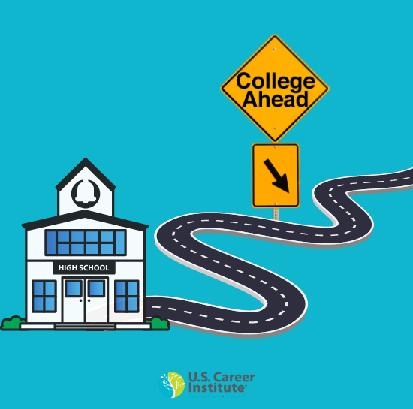
When I was in high school, I never would have believed I’d be in a national leadership honor society in college. However, the reason I am where I am today is because I did not let my high school self define what I did in college. As a high schooler, I was involved in lots of activities, but had never taken on a formal leadership role. I expected that this would be the same case in college. I never thought of myself as a leader because I never had a role that officially defined me as one.
As I stepped onto the University of Maryland campus as a freshman, it would have been easy to continue believing that I wasn’t a leader and to never allow myself to take on leadership opportunities. However, during my first semester
of college, I came to realize that I had greater leadership potential than I was giving myself credit for. In high school, I may not have taken on a formal leadership role, but I possessed qualities that I would consider to be those of a leader. In the different organizations I was involved in, I was a helping hand to others around me when they had questions. I encouraged others even when things got tough. I empathized with others through the ups and downs of high school.
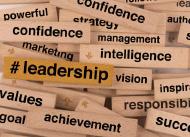
With this realization of my leadership potential, I looked for organizations that interested me and could potentially foster my leadership growth in college. I am grateful that I joined an organization called the Student Alumni Leadership Council (SALC) in my first semester, which has played a great role in my leadership development throughout college. Joining SALC was just the beginning of my leadership journey. Through the organization, I met so many great people that were involved in a plethora of things across campus. With these connections, along with my own exploration, I joined different organizations that have helped me to grow in my leadership journey. In some organizations, I do hold a formal leadership position. However, in others I utilize the skills I’ve gained with my leadership experience to contribute positively as a general member.
As I share my story of my own leadership journey, this is not a completely unique experience. The person that you are in high school does not have to define who you are in college. There have been so many cases of people who feel like they have pigeon-holed themselves into one category because of high school, when in reality, college is a time for new beginnings. College is a time to try new things and discover more about yourself. Even if you feel comfortable with what you have done in high school and want to continue on that same general path, there can always be a new and positive learning experience from stepping out of your comfort zone and doing something high school you could have never imagined.
It can be hard to see past what you have always known about yourself. However, I believe if you take the leap of faith in finding out more about yourself, it can set you up for further success in the future. As you continue throughout life, you will not always be who you were in the past and the transition from high school to college can be a great time to learn this. There is always room for growth and change - who you were before does not limit who you are now!
Your support of Omicron Delta Kappa will not only help offset the cost of honoring the university’s best and brightest students, but will support the educational and leadership development programs that ODK sponsors, including the ODK Lecture Series, ODK Scholarships, and awards, like the annual Col. J. Logan Schutz Leader of the Year award.
Click here to give to the ODK Discretionary Fund or send a check, made payable to the University of Maryland, College Park Foundation, to:
Sarah Williamson Circle Coordinator
Omicron Delta Kappa Sigma Circle 7999 Regents Drive 2108 Clarence Mitchell Building College Park, MD 20742
Sponsorship benefits include the opportunity to network with ODK members and alumni, speaking opportunities, recognition at ceremonies and receptions, tabling at signature UMD events, brand awareness in our online media, and invitations to our programs.
Please contact us for more information at odk@umd.edu
Get a closer look at the Spring 2025 inductees. This class features students achieving in all five pillars. Here is a quick look at some impressive statistics:



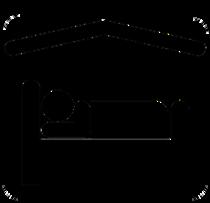

ODK established the Steward of the Fountain program so that ODK members and alumni can contribute to the organization and the University with a gift to support the educational and leadership programs of ODK. The generosity of the Stewards of the Fountain ensures that ODK can continue to recognize achievements of student leaders and provide them with the framework to leave a lasting legacy at the University of Maryland, and their communities.
2012-2013 ODK Executive Officers
2014-2015 ODK Executive Officers
2015-2017 ODK Executive Officers
2018-2019 ODK Executive Officers
Phil Aronson
Dru Bagwell
Brian Bayly & Susan Bayly
Katherine Pedro Beardsley
Kyle Beardsley
James E. Bond
D. Stuart Bowers
Sue Briggs
Sara Brooks
Kenneth Brown
Caroline Carrick Pisano
Adam Chepenik
Zimri Diaz
Devin Ellis
The Honorable Gordon England
Terry Flannery
William Fourney
Eric S. Francis
Michael Freiman
Susan Wachs Goldberg & Bob Goldberg
Barry Gossett
Lance Governale
Marc Greenberg
Alden Gross
Jeff Hathaway
Rick Jaklitsch
The Kenny Family
Kelly Kish
Nick Kovalakides
Kevin Kruger & Lisa Hanson
Phil Livingston
Paul Mandell & Lisa Mandell
Deven McGraw
Joan Meixner
Hillary Cherry Mintz & Doug Mintz
Dawn Nichols
James Osteen
Khalil Pettus
Philip Rever
James Rychner
Phil Schneider & Joyce
Schneider
Mark Sobel
Marc Solomon
Dick Stimpson
Bob Stumpff
Brooke Lecky Supple & Matt
Supple
Ann Tatsios Mowrey
Lee Thornton
Carl Tretter
Joseph Tydings
Jason Ward & Joana Ward
Norman M. Wereley
Joel Willcher
Wayne Willoughby & Gail
Smelkinson Willoughby
Bruce J. Winter
Gabriela Winter
Eric Young & Julia Young
Terry Zacker & John Zacker


At the Sigma Circle of Omicron Delta Kappa, we believe in identifying, honoring, and developing leaders in collegiate and community life. Our members live out ODK’s mission by collaborating across disciplines, embracing inclusivity, leading with integrity, striving for scholarship, and serving their communities with purpose.
These values are deeply connected to the Maryland Promise Program (MPP), which provides need-based scholarships and comprehensive support to talented students from across Maryland and D.C. MPP scholars, like ODK members, are changemakers who see leadership as a lifelong commitment.
This fall, we begin sharing the story of Jaime Dannemann ’96, a proud ODK member whose life embodied our five pillars of campus life; academics and research, athletics, service to campus and community, communications, and the creative and performing arts. Through the Jaime Dannemann Maryland Promise Scholarship, her legacy
continues by supporting scholars who reflect the same dedication to service, community, and excellence.
We invite you to watch the Maryland Promise impact video to see how Jaime’s story is part of a much larger movement to open doors and expand opportunities for future Terp leaders.
Join us in honoring leadership that lasts. Share a memory, reflect on how ODK shaped your own journey, or contribute to the Jaime Dannemann Maryland Promise Scholarship Every story, every connection, and every gift helps carry forward the mission that unites us.
Look for our Spring 2026 print edition for a full feature on the shared impact of ODK and MPP with alumni reflections, stories of service, and examples of our leadership values in action. If you have a story to share connected to Jaime, MPP, and the impact of ODK on your experience, please reach out to us at odk@umd.edu.

2108 Clarence Mitchell Building 7999 Regents Drive University of Maryland College Park, Maryland 20742